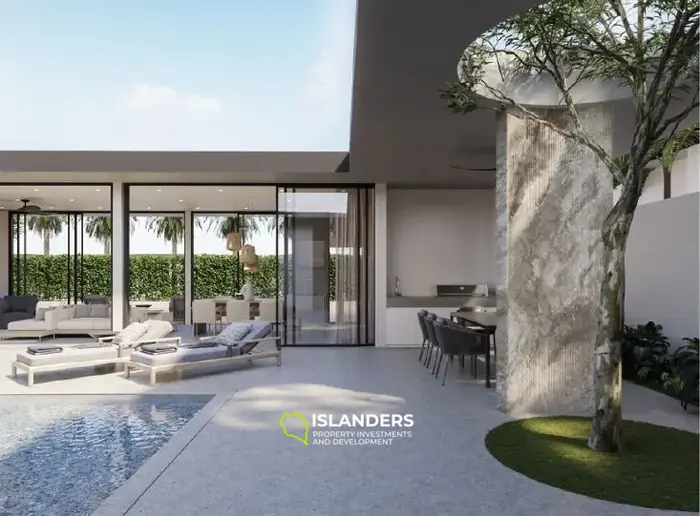Contents
- What the Dunning–Kruger Effect Means in Development
- Land & Utilities Due Diligence: Risk Checklist
- Financial Model: Probabilistic Budgeting with P50/P80
- Monte Carlo for Cost & Schedule
- Tornado Sensitivity Chart (IRR/NOI)
- MEP Coordination & Design-to-Budget
- Off-plan Sales & the Pricing Engine
- SOPs & Owner Portal
- Premortem, Red Team, Brier Scores, Post-mortem
- Mini Checklist Before Buying a Plot
- Case: “Hillside Villa”
- FAQ
What the Dunning–Kruger Effect Means in Development

In real estate development, the Dunning–Kruger effect appears when confidence exceeds competence. Result: inflated schedule and budget promises, weak control over the real estate development process, and unpriced risks. The remedy: disciplined risk management, base rates (reference classes), probabilistic estimates, and independent reviews.
Land & Utilities Due Diligence: Risk Checklist

Before schematic design, verify: title/encumbrances, access (public/contractual), utility connections (power capacity, water, wastewater), slope/geology, and height/offset/environmental restrictions. This developer risk checklist prevents expensive late-stage rework.
Financial Model: Probabilistic Budgeting with P50/P80

P50 is the median forecast of final cost/schedule; P80 is a more conservative level with ~80% probability of meeting it. The difference between P50 and P80 becomes the contingency. Include IRR/NPV/NOI/DSCR, seasonality of revenue, and real base rates from comparable projects.
How to compute P80 and set a probabilistic budget
Monte Carlo for Cost & Schedule
Monte Carlo simulation models uncertainty of key inputs: concrete cost (triangular), retaining walls (lognormal), weather windows (Bernoulli). Running 5–10k simulations yields a distribution of final cost/schedule and defensible P50/P80 levels.
Step-by-step Monte Carlo for developers
Tornado Sensitivity Chart (IRR/NOI)
A tornado sensitivity chart ranks variables by influence on outcomes (IRR/NOI/budget/schedule). Stress key ranges for land/engineering, OR, ADR, retaining wall costs, logistics, etc., to focus risk controls where they matter most.
Tornado chart example & template
MEP Coordination & Design-to-Budget
MEP (Mechanical, Electrical, Plumbing) needs early coordination: shafts, routing, clear heights, capacities. The Design-to-Budget approach fixes a target cost per m² before design and applies value engineering without losing function.
MEP coordination: BIM, clash checks & checklists
Off-plan Sales & the Pricing Engine
Validate demand before major CAPEX; prepare listing content and a showroom. For rentals, deploy a pricing engine—a dynamic pricing algorithm that manages ADR/OR/RevPAR by seasonality and competition.
Dynamic pricing for villas & vacation rentals
SOPs & Owner Portal
SOPs (standard operating procedures) stabilize quality and reduce human error. An owner portal brings transparency: reports on OR, ADR, RevPAR, NOI, work orders, and payouts.
Owner portal & transparent reporting
Premortem, Red Team, Brier Scores, Post-mortem
- Premortem (45 minutes): “Imagine the project failed — why?” → preventive actions and risk owners.
- Red team: independent QS/PM that “breaks” assumptions/cost plans/contracts before signature.
- Brier scores: a metric for probabilistic forecast accuracy; maintain a calibration log for schedule/OR/ADR predictions.
- Post-mortem: 5 facts, 3 lessons, 2 SOP changes after each milestone.
Session templates & Brier score tracker
Mini Checklist Before Buying a Plot
- Title/encumbrances — independent legal due diligence.
- Access — documented public or contractual easement.
- Power — load calculation, connection point, upgrade cost/timeline.
- Water/wastewater — source, yield/quality, seasonality, selected treatment scheme.
- Slope/geology — report + budget for drainage and retaining walls.
- Restrictions — height, offsets, environmental zones.
- Logistics — supply feasibility by season/route/cost.
Full land due diligence checklist
Case: “Hillside Villa”
Plan: 12 months, $2,000/m², zero contingency. Reality: +5 months delay due to monsoon/logistics; +$400/m² for retaining/drainage; +$80/m² for transformer upgrade; slow presales without a showroom. Takeaway: without reference classes, a proper P80 reserve, early MEP coordination, and a tornado analysis, even “beautiful” projects lose their economics.
FAQ
What are P50 and P80 in a construction budget?
P50 is the median forecast; P80 is a more conservative level with ~80% probability of meeting it. The gap is used as contingency to manage risk.
How do I use Monte Carlo for cost and schedule?
Define uncertain inputs and their distributions (triangular, lognormal, etc.), run thousands of simulations, and get a distribution of total cost/schedule with clear P50/P80 levels.
Why use a tornado sensitivity chart?
To identify which factors drive IRR/NOI/budget/schedule the most — so you place risk controls and contingency where impact is highest.
What does MEP coordination include?
Aligning HVAC, electrical loads/panels, and water/wastewater routing: shafts, elevations, clearances, clashes (often via BIM).
How to organize SOPs and an owner portal?
Document SOPs, SLAs, and quality gates; provide owners dashboards with OR/ADR/RevPAR/NOI, reports, work orders, and payouts in one place.
What are premortem, a red team, and Brier scores?
Premortem is a quick pre-mortem risk session; a red team is an independent QS/PM audit of assumptions/costs/contracts; Brier scores measure the accuracy of probabilistic forecasts.
Further reading
- Real estate development stages & risk control
- Owner reporting: OR/ADR/RevPAR/NOI
- Value engineering & Design-to-Budget
Need help with the model, P50/P80, and Monte Carlo?
We’ll prepare a probabilistic budget, build a tornado sensitivity chart, and set up dynamic pricing for rentals. Contact the team






